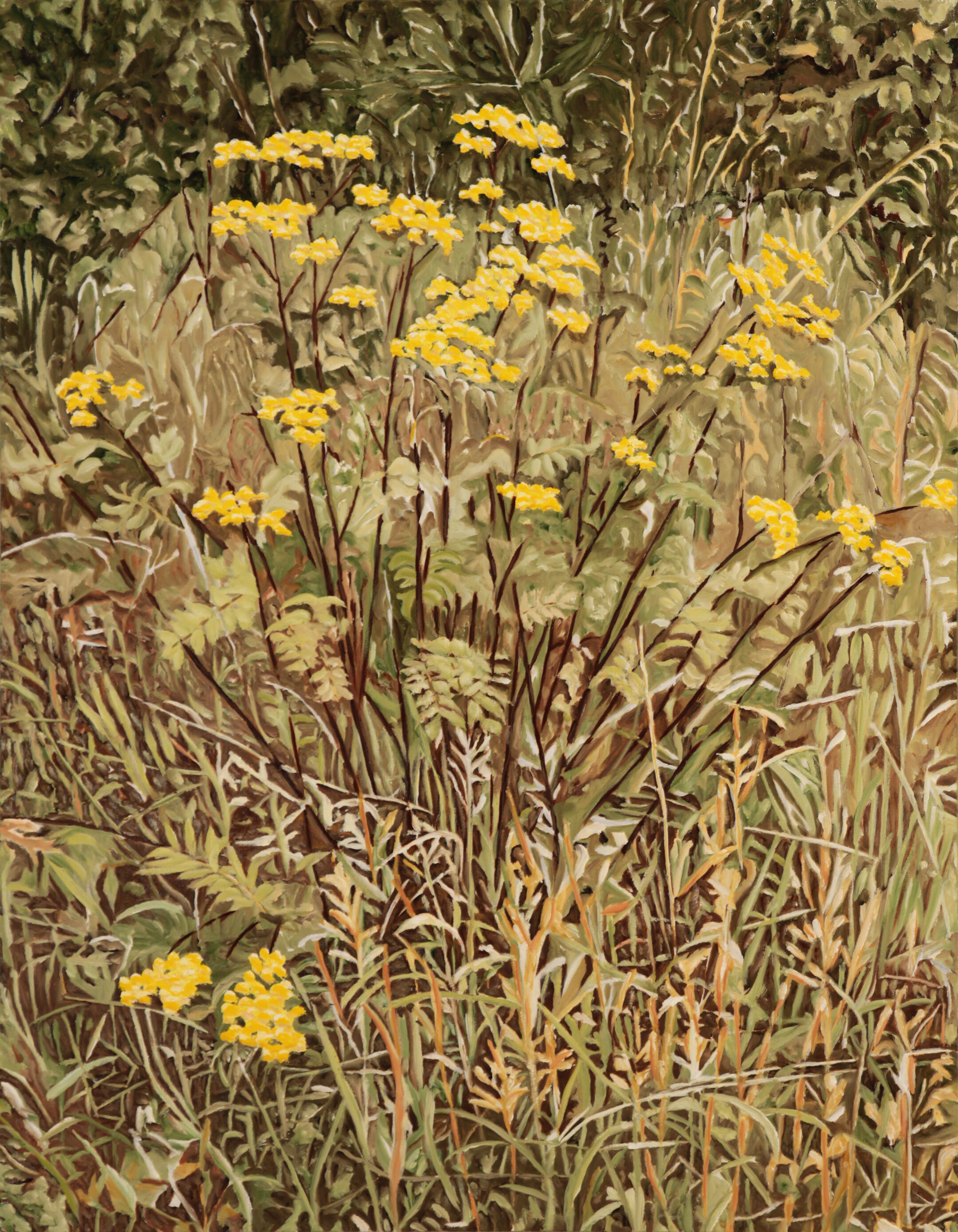Alan Paine Radebaugh
“As a child in Maine, I spent rainy, summer afternoons in the barn with oil paints, occupying myself for hours. In my early teens, I created large oil abstracts on my bedroom walls and ceiling and the walls of my uncle’s bathroom. Entering the College of Wooster as a pre-med student, I preferred studying photography and jewelry making. I designed and crafted sculptural art furniture for ten years and received a BFA in printmaking from the University of New Mexico. Whichever medium I practiced or studied, I always returned to painting. Oil paint has been my primary medium for over 30 years, and the smell of it still brings back memories of rainy afternoons in North Sebago, Maine.”
Above: GSL 6, Oil on canvas, 36” x 28”
Artist Statement:
From the Arctic to the Gulf, from the Continental Divide to the Mississippi River, 100 million years ago, the Western Interior Seaway flowed over this land; today it is prairie, desert, tundra – the Interior Plains of Canada and the Great Plains of the Untied States.
The Western Interior Seaway, an ancient inland sea, was created when a tectonic plate subducted under another, causing a depression. This depression and the high sea levels at that time allowed waters to flow in from the Gulf of Mexico and the Arctic Ocean. Then 50 million years ago, an uplift hoisted sandstone and shale above sea level, and the low-lying basins gradually subsided. The Western Interior Seaway retreated south towards the Gulf of Mexico. The land became dry.
Alan Paine Radebaugh has been painting the strata and flora of this region since 2008. He has driven many one- and two-lane roads winding through the Plains. He has sketched at the headwaters of the Mississippi River in Minnesota, currently a muddy streamlet expanding as it flows downward; Galveston Island State Park in Texas where the vastness and power of the ancient seas are still visible; in the mountains and deserts of New Mexico which hold the earth’s history; National grasslands in Nebraska, South Dakota, Oklahoma, and Wyoming where prairie grasses grow in now dried sea beds; the still raw Canadian Rockies, ice fields of Alberta, and near the Arctic Ocean in Northwest Territories. Each magical place is awash in millions of years of natural history.
Driving, walking, drawing, and photographing for weeks on the road, Alan returns to his studio in New Mexico to paint. He paints not only the strata and flora of today’s Plains but also his awe of and fascination with the history of 100 million years.
In these paintings Radebaugh melds images from one place with those from another, intermingling sketches, memory, and imagination, to create his impression of the Plains—with a ghost-like feel of the ancient seas. Images from Black Kettle National Grassland mingle with images from Oglala National Grassland. Images of the headwaters of the Mississippi mingle with those of the headwaters of the Missouri. The paintings, thus, reflect an impression of the Plains rather than document a particular site.
“Since my first exposure to the Plains 40 years ago, I have imagined the sea rolling over this land--the waves, massive and powerful, stretching in all directions for millions of years, pounding over a seabed of silt and rocks. I have looked out over these vast open spaces and seen the Sea, a sea that 100 million years ago stretched from the Gulf of Mexico to the Arctic Ocean and from the Rockies to the Mississippi River.”















